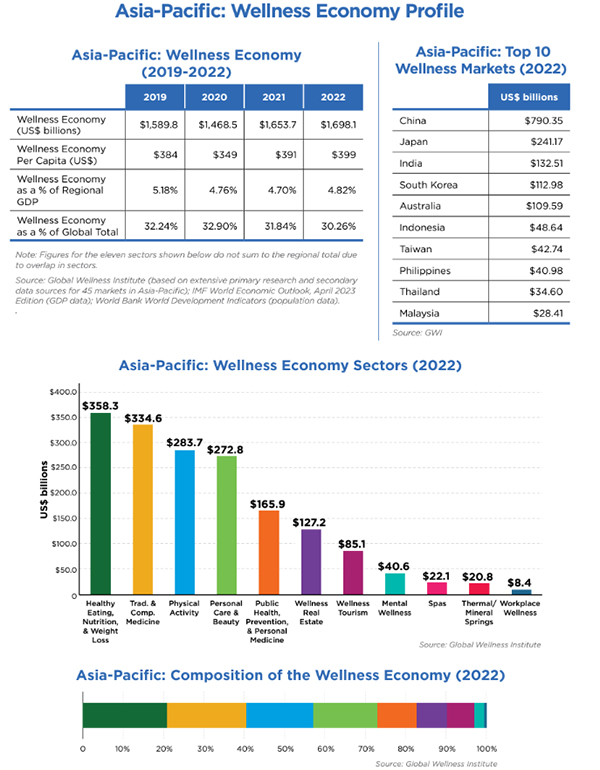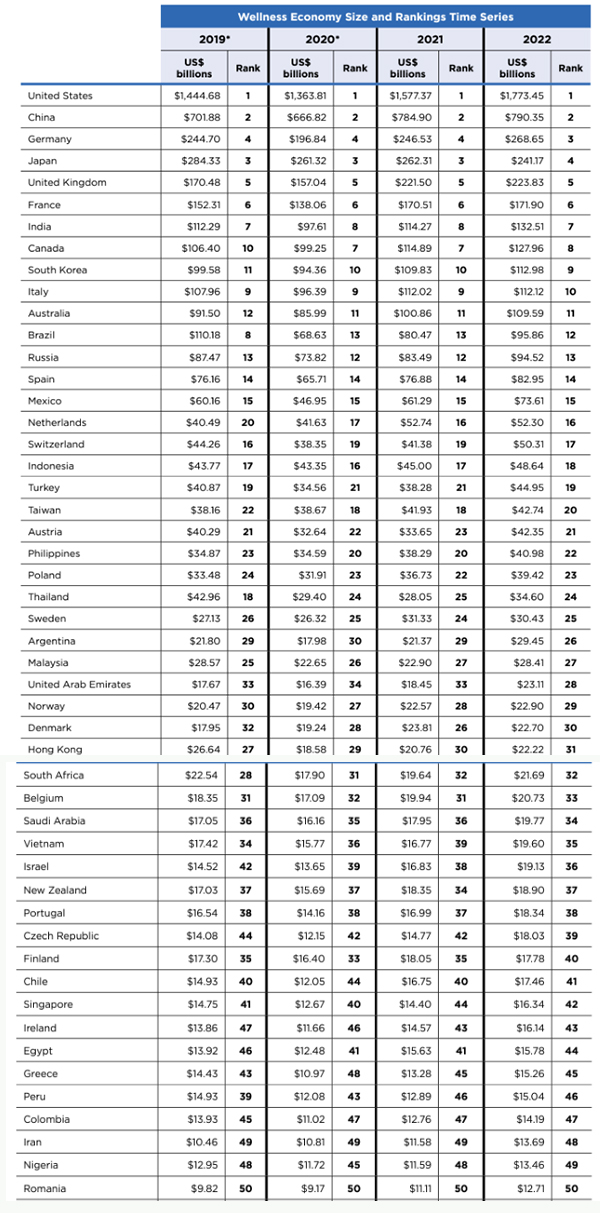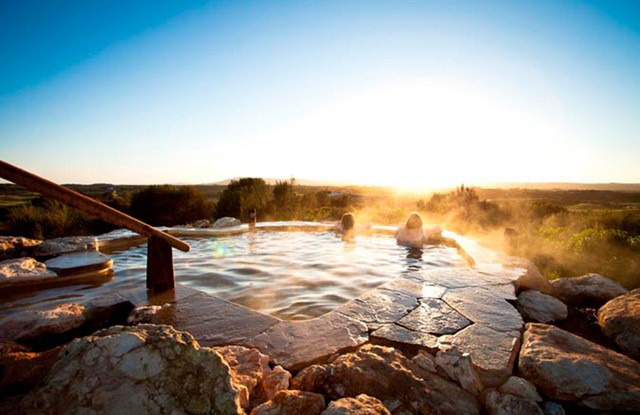The Global Wellness Institute (GWI) has today released a comprehensive report delving into the wellness economies of 145 countries and ranking them by size.
This new, in-depth research finds the three biggest wellness markets are the United States (US$1.8 trillion), China (US$790 billion) and Germany (US$269 billion).
GWI ranks Japan 4th (US$241 billion), Australia 11th (US$110 billion), Indonesia 18th (US$49 billion), and New Zealand 37th (US$ 19 billion).
Ophelia Yeung and Katherine Johnston, GWI’s senior research fellows note “for countries interested in growing their wellness economy, it’s crucial to know where they stand in this massive global industry. It’s also important to see how different countries’ wellness markets have responded to the impacts of the pandemic.”
At the global level, consumers now spend as much on wellness per capita as on healthcare—and much more on wellness than on clothing/shoes and hotels/restaurants.
The Global Wellness Institute report answers key questions about the wellness industry:
- How big is the total wellness market for each country?
- Which countries’ markets are growing fastest post-pandemic?
- How much do people spend per capita each year on wellness in each nation?
- What is the wellness market’s contribution to each country’s overall economy/GDP?
The report is a companion to GWI’s 2023 Global Wellness Economy Monitor, a complete global update on all 11 wellness sectors, finding that the world wellness economy is worth $5.6 trillion and forecast to reach $8.5 trillion by 2027.
The Global Wellness Institute (GWI) defines the wellness economy as industries that enable consumers to incorporate wellness activities and lifestyles into their daily lives. In their definition, the wellness economy encompasses 11 varied and diverse sectors:
- spas
- thermal/mineral springs
- wellness tourism
- workplace wellness
- wellness real estate
- physical activity
- mental wellness
- personal care & beauty
- healthy eating, nutrition, & weight loss
- public health, prevention, personalized medicine
- traditional and complementary medicine.
The Global Wellness Economy: Country Rankings is filled with data. It finds that the US remains the undisputed goliath in wellness spending, with an annual market worth $1.8 trillion, and ranking first in nine of the 11 wellness sectors. Almost all the top-25 wellness markets have seen strong growth since the pandemic, with the UK, the Netherlands, the US, Mexico, Canada and Australia as standouts, surpassing their pre-pandemic market sizes by 120% or more. Globally, the wellness economy drives 5.6% of total GDP—so, roughly 1 in every 20 “dollars” spent by consumers worldwide is on wellness.
In the United States, Canada, and Australia, the strong performance of their wellness economies has been primarily driven by robust growth across several sectors – physical activity; wellness real estate; personal care & beauty; and healthy eating, nutrition, & weight loss – as well as the rapid recovery of wellness tourism.

Weak tourism recovery is hampering wellness economy recovery in some markets. In seven markets, the wellness economies have not yet recovered to their pre-pandemic levels (when measured in U.S. dollars). Hong Kong has been hit hard by the travel restrictions and quarantine requirements that shrank its wellness tourism sector by 93% from 2019-2022, alongside a decline in GDP and consumer spending affecting key wellness sectors, including personal care & beauty, healthy eating, and traditional & complementary medicine. Thailand’s recovery has also been hampered by the prolonged downturn in wellness tourism, with this sector still at less than half its pre-pandemic level as of 2022. Wellness economy as a share of GDP has shrunk significantly in both Hong Kong and Thailand from 2019-2022.
Most of the top markets for per capita wellness spending are among the world’s wealthiest countries and also rank in the top 25 globally for GDP per capita, such as Switzerland, Iceland, the United States, Austria, Australia, etc. The high per capita spending and large wellness economies in these countries reflect a substantial domestic consumer market for wellness products and services, bolstered by high spending by inbound and domestic wellness tourists.

Access the full report here
Graphs. Credit: GWI
About the author
Karen Sweaney
Co-founder and Editor, Australasian Leisure Management
Artist, geoscientist and specialist writer on the leisure industry, Karen Sweaney is Editor and co-founder of Australasian Leisure Management.
Based in Sydney, Australia, her specific areas of interest include the arts, entertainment, the environment, fitness, tourism and wellness.
She has degrees in Fine Arts from the University of Sydney and Geological Oceanography from UNSW.
Read more from this author









